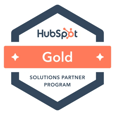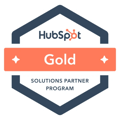The 3 Most Important Objectives in B2B Advertising, Marketing & Growth
Business growth can often seem elusive. But the right objectives, backed by the right marketing strategies, can ensure your business keeps moving forward. Here are three of the most important objectives for B2B organizations who want to increase growth and generate more revenue.
Before we dive in, it’s important to note that these objectives take team effort. Growth isn’t the sole responsibility of a single marketing or sales team. Instead, it takes a unified company pulling toward the same goals, building alignment, and tearing down silos. So with that in mind, let’s explore the key objectives that will set your business on the path to growth.
3 B2B Business Objectives
1. Generate Sales and Leads
There’s no question that without viable leads in your sales pipeline, your business isn’t going anywhere. A steady stream of both marketing-qualified leads (MQLs) and sales-qualified leads (SQLs) is the best way to ensure your business is on track for growth.
Related: Why HubSpot Starter Is The Smart Choice For Your Business
What Is Lead Generation?
“Lead generation is the process of attracting prospects to your business and increasing their interest through nurturing, all with the end goal of converting them into a customer.”
Lead generation turns prospects into leads that your marketing team can nurture—and then turn over to sales. It’s important to note the word “prospects” here. The prospective customer is someone interested in your product or service, who has already been attracted to your company. In order to become a lead, the prospect has indicated interest (for instance, by submitting a form on your website).
Why is this important? Because the lead has initiated a relationship by showing organic interest in your business. This preexisting interest means your lead is much more likely to become a customer.
Related: Hook Your Hero: How To Solve Your Customer’s Problems With StoryBrand
How To Do Lead Generation Right
Lead generation is a process. It’s made up of research and analysis, and it requires keen insights into your buyer personas.
But first, In order to generate leads, you need to have a lead generator in place. This usually looks like a form on a landing page that a visitor fills out and submits in exchange for an offer. At that point, you’ve got yourself a lead.
Now let’s take a look behind the curtain at the mechanics of that lead-generating process. Before the prospect clicks on the Call To Action on your landing page, you need to have successfully attracted your ideal customer. And that means research, research, research. Lead conversion isn’t a happy accident—it’s the result of knowing your customer, your product, the market, and the points of intersection. It’s also important to have the right tools, such as a Customer Relationship Management (CRM) platform like HubSpot. All of these factors play into whether or not your lead generation efforts are successful.
Related: Lead Nurturing: How To Keep Your Prospects Engaged
2. Improve Brand Awareness
If you’re strategizing for growth, you need to make sure your ideal customers know who you are. That’s where brand awareness comes in. Brand awareness is a measure for how recognizable your brand is and how connected it is to the problem you solve.
Why Is Brand Awareness Important?
Brand awareness is an indicator of brand health. A healthy brand is recognizable and communicable. That means you need a synthesis of visual branding (logo, font, color, aesthetic) and direct messaging so that people automatically associate your brand with the products or services you provide and the problems you solve. The upshot of brand awareness is that your brand is top of mind when people are ready to make a purchase.
Brand awareness is also a crucial part of building brand loyalty. How can your customers map your brand onto their identity if they don’t know who you are? Consider the brands that have the strongest fan base: Apple, Disney, Coca-Cola. Aside from being three of the largest and most profitable corporations, they all have one thing in common: they all have easily identifiable brands that people love to engage with.
Even if your company doesn't operate at the scale of Apple or Disney, you can still benefit from their example.
How To Build Brand Awareness
Before you can have brand awareness, you need to have a recognizable brand. This goes beyond a logo and font preference—take into account your brand’s tone of voice, values, aesthetic, and story. All of these elements contribute to a cohesive brand that compels people to engage with you.
3. Increase Customer Loyalty and Retention
Customer retention seems like an evergreen focus for business leaders—and with good reason. Smart business leaders know that your existing customers are your best customers. They already know who you are and what you do, so they’re easier to sell to. Because of that, existing customers are up to 25 times less expensive than onboarding new customers. If you want to position your company for growth, don’t overlook your existing customer base.
Related: 3 Ways You Can Sell To Your Existing Customers
How To Turn Loyal Customers Into Raving Fans
Customer retention hangs on one essential factor. Care to guess what that is? No, it’s not your product (well, not entirely). The most important thing that keeps your customers loyal is customer delight.
Remember our inbound marketing objectives: to attract, engage, and delight customers. Delighted customers are not only satisfied with a high-quality product or service, they’re delighted with their overall customer experience.
Providing consistent customer delight means it's baked into each and every process. In order to accomplish this, you’ll need to examine every angle of your process and strategy and examine it through the eyes of your customers. Here are some common questions you might ask:
- What points of friction can I eliminate?
- Am I anticipating the buyer’s journey and providing clear next-steps?
- Where are opportunities for customized experiences?
- How can I provide more information to anticipate questions?
- What part of my sales process can be streamlined for a seamless experience?
- What kind of post-purchase support or follow-up can I offer?
These questions are just a starting point for a well-rounded delightful customer experience. But it’s important to remember that although you’re selling a high-quality product or service, you’re also selling a customer experience. And at the end of the day, the most memorable thing for your customer will most likely be their experience.
These days, a product or service is available with just a few clicks online. An exemplary customer experience is hard to find, and customers stick around when they find one.
Team Sauce: Your Partner For Growth
When you’re ready to put these objectives into action, Team Sauce is here to help. We’re the strategic digital marketing partner for B2B organizations who are ready to turn into revenue-generating machines. Ready to #GrowSmarter? Click here to schedule your free Connect Call today!
.webp?width=12693&height=4513&name=Sauce%20Logo%20Dark%20Ht%20(1).webp)

.webp?width=180&height=64&name=Sauce%20Logo%20Dark%20Ht%20(1).webp)











